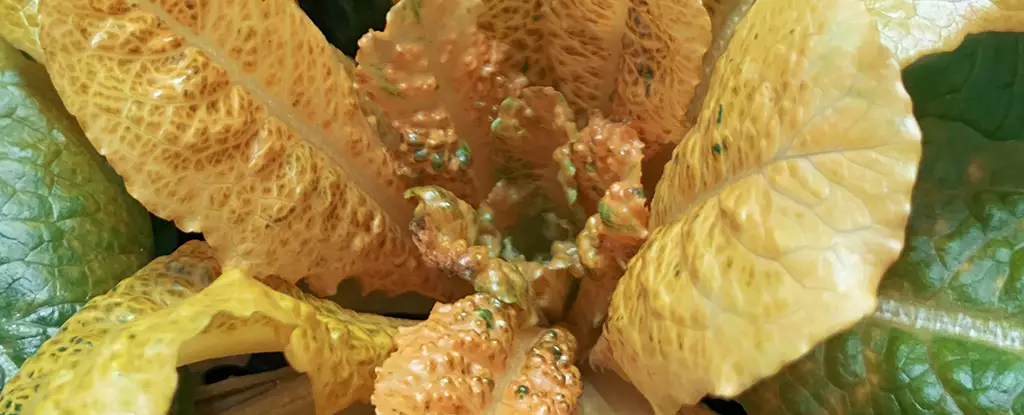In light of prevailing global nutrition challenges, an impressive scientific breakthrough has emerged: the development of genetically engineered ‘golden lettuce’, which boasts a substantially elevated concentration of vitamin A, a nutrient vital for various bodily functions. With its potential to enhance immune function, vision, and overall growth, this innovation is a beacon of hope for addressing vitamin A deficiencies that plague millions worldwide. Moreover, the methodology utilized here could facilitate similar advancements in other crops, making it a landmark achievement in agricultural biotechnology.
The roots of this breakthrough lie with researchers at Valencia Polytechnic University (UPV) in Spain, who have cleverly engineered Lactuca sativa—common lettuce. By enhancing the levels of beta-carotene, the bright red-orange pigment that converts to vitamin A within our metabolism, the team has effectively bolstered this plant’s nutritional profile. Notably, typical beta-carotene storage occurs in chloroplasts, the plant’s photosynthesis hubs. Given the essential nature of these organelles in sustaining plant life and growth, any modification that risks disrupting their function warrants a thoughtful and innovative approach.
This team, led by molecular biologist Manuel Rodríguez Concepción, surmounted the inherent challenges by thinking creatively about the storage and production of beta-carotene. Rather than cramming additional pigment into chloroplasts, which could have catastrophic repercussions for the plant, the genetic modifications directed this pigment toward the cytosol, a fluid component of cells where it is less ordinarily found. In a novel twist, the researchers transformed some chloroplasts into chromoplasts—specialized structures designed for pigment storage—using a bacterial enzyme’s gene through genetic engineering.
Richard Morelli, another molecular biologist involved in this pioneering research, notes that the inclusion of high-intensity light during cultivation not only accelerated the accumulation of beta-carotene but also improved its bioaccessibility. The higher bioaccessibility means that when this unique lettuce enters the human digestive system, the body can utilize the vitamin A derived from beta-carotene more efficiently. This nutrient accessibility is particularly crucial as studies have shown that vitamin A deficiency is a pressing public health concern that has detrimental effects on millions, particularly in vulnerable populations, including children and pregnant women.
The brightly colored ‘golden lettuce’ serves dual purposes: it does not only accentuate the significance of biotechnological advances in crop production but also opens pathways for addressing micronutrient deficiencies on a global scale. In particular, this innovative method could be translated to other crops, thereby enriching diets and enhancing food security. For instance, developing ‘supercarrots’ or innovative varieties of other popular vegetables could be a futuristic pursuit sparked by the insights gained from the golden lettuce project.
Despite the promising developments, it is essential to critically address the ethical and ecological ramifications that accompany genetic modifications. Public apprehension surrounding GMOs remains a significant barrier to widespread acceptance, which necessitates clear communication between scientific communities and the public about both the benefits and potential risks. Thus, educational initiatives must accompany scientific advancements to foster understanding and trust among consumers.
Furthermore, the long-term sustainability of such genetic advancements must be evaluated. Will these changes lead to adverse effects on existing ecosystems? Could relying heavily on genetically modified crops obscure the importance of dietary diversity? Questions like these highlight the importance of holistic approaches to nutrition that incorporate both innovative science and traditional agricultural practices.
The advent of ‘golden lettuce’ represents just the starting point in our quest to address nutrition deficits through scientific exploration. The innovative strides taken by researchers at UPV herald a new dawn for food fortification and agricultural development. As we continue to confront global nutritional challenges, the exploration and integration of such biotechnological achievements will be pivotal in nurturing a healthier, more nourished world.


Leave a Reply